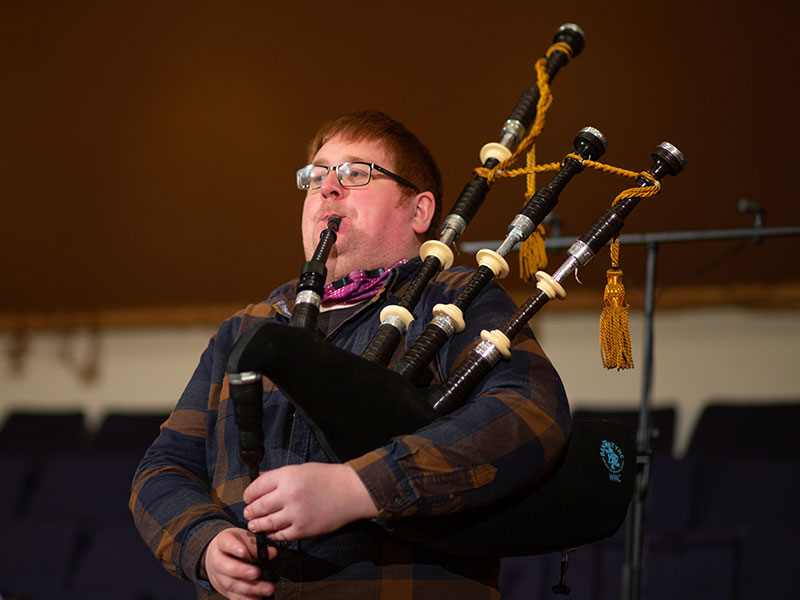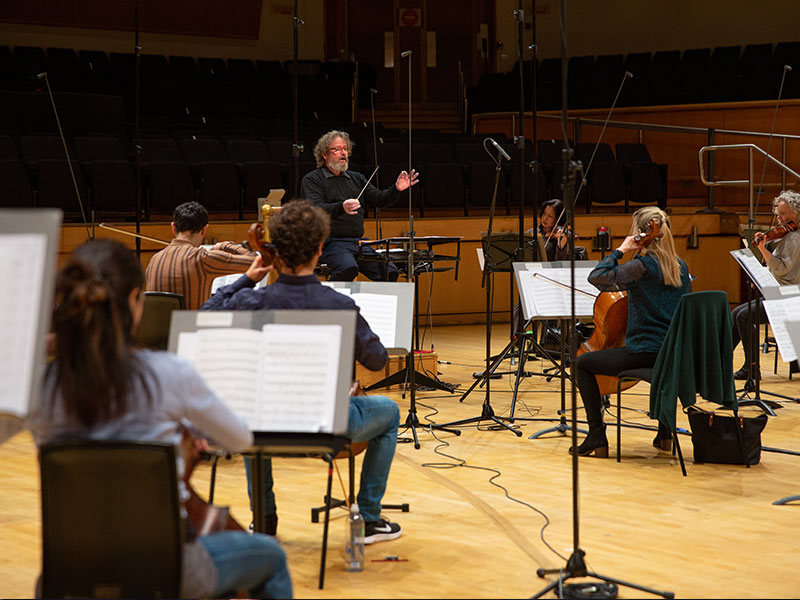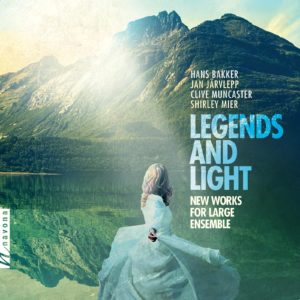Legends and Light Vol. 2
Helen MacKinnon composer
Nan Avant composer
Richard E Brown composer
Deborah Kavasch composer
Anthony Wilson composer
Ben Marino composer
Kim Diehnelt composer
LEGENDS AND LIGHT VOL. 2 from Navona Records leaves no stone unturned. From the vast expansiveness of the open sea to the microscopic particles of our world’s chemical makeup, this follow-up to 2018’s LEGENDS AND LIGHT is an ambitious collection of new works for large ensemble performed by the Royal Scottish National Orchestra and the Filharmonie Brno. In this album, seven composers offer their insights into the components of our world through music, with works highlighting cultures, locations, forces of nature, and human life. While many of the pieces are arranged for orchestral ensembles, listeners will also find Scottish Great Highland bagpipes and Irish Uilleann pipes featured on the album, offering a deeply rewarding listening experience.
Listen
Stream/Buy
Choose your platform
Track Listing & Credits
| # | Title | Composer | Performer | |
|---|---|---|---|---|
| 01 | The Rinns of Islay | Helen MacKinnon | Royal Scottish National Orchestra | David Watkin, conductor | 21:14 |
| 02 | Tributum: For Celtic Bagpipes and Orchestra | Nan Avant | Royal Scottish National Orchestra | David Watkin, conductor; Lorne MacDougall, Great Highland Bagpipes; Ryan Murphy, Uilleann Pipes | 8:52 |
| 03 | Voices of the Night: A Nocturnal Fantasy for Orchestra | Richard E Brown | Royal Scottish National Orchestra | David Watkin, conductor | 9:52 |
| 04 | Lost Voices | Deborah Kavasch | Royal Scottish National Orchestra | David Watkin, conductor | 10:39 |
| 05 | Manannán – Legend of the Sea | Anthony Wilson | Filharmonie Brno | Pavel Šnajdr, conductor | 11:38 |
| 06 | Yrast 2.0 | Ben Marino | Filharmonie Brno | Pavel Šnajdr, conductor | 4:07 |
| 07 | Striadica: A Symphonic Passage | Kim Diehnelt | Filharmonie Brno | Pavel Šnajdr, conductor | 8:45 |
The Rinns of Islay
Recorded March 25, 2021 at Glasgow Royal Concert Hall in Glasgow, Scotland
Session Producer Brad Michel
Session Engineer Hedd Morfett-Jones
Tributum, Voices of the Night
Recorded March 24, 2021 at Glasgow Royal Concert Hall in Glasgow, Scotland
Session Producer Brad Michel
Session Engineer Hedd Morfett-Jones
Lost Voices
Recorded March 25, 2021 at Glasgow Royal Concert Hall in Glasgow, Scotland
Session Producer Brad Michel
Session Engineer Hedd Morfett-Jones
Manannán – Legend of the Sea
Recorded April 8, 2021 at Besední dům in Brno, Czech Republic
Session Engineer & Producer Jaroslav Zouhar
Session Co-Producer Jan Košulič
Yrast 2.0
Recorded April 6, 2021 at Besední dům in Brno, Czech Republic
Session Engineer & ProducerJaroslav Zouhar
Session Co-Producer Jan Košulič
Striadica: A Symphonic Passage
Recorded April 9, 2021 at Besední dům in Brno, Czech Republic
Session Engineer & Producer Jaroslav Zouhar
Session Co-Producer Jan Košulič
Executive Producer Bob Lord
Executive A&R Sam Renshaw
A&R Director Brandon MacNeil
A&R Ivana Hauser, Danielle Lewis, Morgan Santos
VP of Production Jan Košulič
Production Director Levi Brown
Production Assistant Martina Watzková
Audio Director, Editing & Mixing (Tracks 5-7) Lucas Paquette
Editing & Mixing (Tracks 1-4) Brad Michel
Mastering Brad Michel
VP, Design & Marketing Brett Picknell
Art Director Ryan Harrison
Design Edward A. Fleming
Publicity Patrick Niland, Aidan Curran
Content Manager Sara Warner
Artist Information

Helen MacKinnon
Scottish composer Helen MacKinnon studied music at The University of Glasgow, specializing in composition and graduating with a Bachelor of Music First Class Honours. Her most notable work of that period was Crossing the Domain, a setting of Scottish poet Edwin Morgan’s poem From the Domain of Arnheim for female voices and percussion. MacKinnon cites her compositional influences as being her Scottish heritage, Catholic faith, and cinematic music.
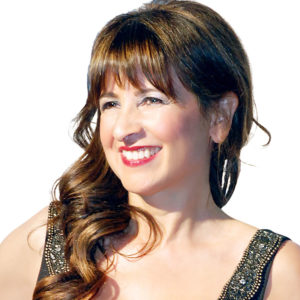
Nan Avant
Nan Avant’s music embraces thematic and rhythmic intentions often reflecting her Latin heritage, encompassing her passion for classical, jazz, world, and ethnic music. Avant’s music has been honored with numerous accolades and awards including her most recent recordings on the Navona Records label with the London Symphony Orchestra, the Royal Scottish National Orchestra and the Zagreb Festival Orchestra garnering her three Silver Medals in the Global Music Awards 2022–2023, The American Prize: Winner – Pops/Light Orchestral Composition 2023, and Winner in two categories of the Clouzine International Music Award 2023.
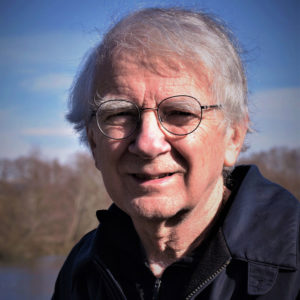
Richard E Brown
Richard E. Brown, a native of New York State and has been active as a composer-arranger and music educator for many years. His training includes M.M. and D.M. degrees in composition from Florida State University, as well as a B.A. in music education from Central College, which named him a Distinguished Alumnus in 1983. His principal composition studies were with Carlisle Floyd, John Boda, and Charles Carter. He is a member of ASCAP and is represented in the catalogs of several trade publishers, as well as his personal imprint Dacker Music.

Deborah Kavasch
Deborah Kavasch, BMI composer, soprano, educator, and specialist in extended vocal techniques, has had works commissioned and performed in North America, Europe, the United Kingdom, and China. She has received grants and residencies in composition and performance, was a 1987 Fulbright Senior Scholar to Stockholm, and has appeared in major international music centers and festivals in concerts, solo recitals, workshops, lecture/demonstrations, and television and radio broadcasts since 1981.
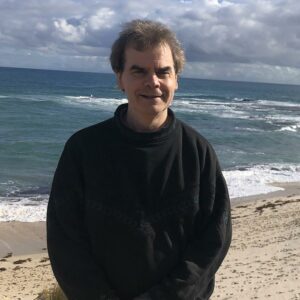
Anthony Wilson
Anthony Wilson (b. 1962) developed a strong interest in music from an early age. He spent many hours at the piano as a child, experimenting with various combinations of sound. His parents’ record player also provided the wonderful experience of being able to enjoy both the world of classical music and popular music.

Ben Marino
Ben Marino (b. February 18, 1982) is a composer, producer, and pianist. Born and raised in Valencia CA, his education in music started early at the piano learning the Suzuki method. His private piano studies continued throughout high school where he was influenced by the solo piano compositions of Bela Bartok and Frederic Chopin. After graduating William S. Hart High School in Newhall CA in 2000, he was accepted to study Piano Performance and Music Composition at the prestigious Berklee College of Music in Boston, MA (2001-2002).

Kim Diehnelt
Kim Diehnelt (b. 1963) is compelled to create beauty through her work as a conductor, composer, and artistic coach. Trained in the United States and Europe, Kim Diehnelt established her musical crafts in Finland and Switzerland, leading Baltic, Russian, and European ensembles. Trained in the United States and Europe, Kim Diehnelt established her musical crafts in Finland and Switzerland, leading Baltic, Russian, and European ensembles. She currently resides in Burlington VT. Diehnelt has been composing works for solo instruments, chamber, orchestral and choral ensembles since 2011 when, after decades on the conductor’s podium, she “suddenly had something to say.”
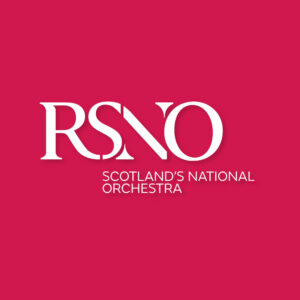
Royal Scottish National Orchestra
Formed in 1891 as the Scottish Orchestra, the company became the Scottish National Orchestra in 1950, and was awarded Royal Patronage in 1977. Throughout its history, the Orchestra has played an integral part in Scotland’s musical life, including performing at the opening ceremony of the Scottish Parliament building in 2004. Many renowned conductors have contributed to its success, including George Szell, Sir John Barbirolli, Walter Susskind, Sir Alexander Gibson, Neeme Järvi, Walter Weller, Alexander Lazarev and Stéphane Denève.

Filharmonie Brno
Since its earliest days, Filharmonie Brno has established a profile as a Janáčkian orchestra, thus making a substantial contribution to the cultural life of Brno — where Leoš Janáček composed nearly his entire oeuvre — and becoming an enthusiastic champion of his music. Since its foundation in 1956, the orchestra has regularly performed Janáček’s works in concerts at home and abroad; it has also recorded, multiple times, his complete symphonic works and cantatas.
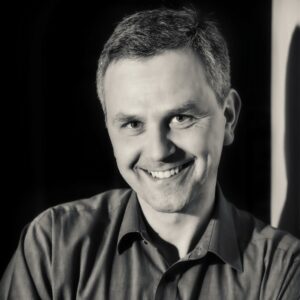
Pavel Šnajdr
Pavel Šnajdr is a Czech conductor and composer. He is a graduate of the Janáček Academy of Music and Performing Arts (JAMU), Brno in composition (which he studied with Alois Piňos) and conducting (with Emil Skoták). Beyond working with symphony orchestras, he has been engaged by music theatres including the J.K. Tyl Theatre in Pilsen, the Prague State Opera and the Moravian Theatre in Olomouc, and currently conducts opera at the National Theatre in Brno.
